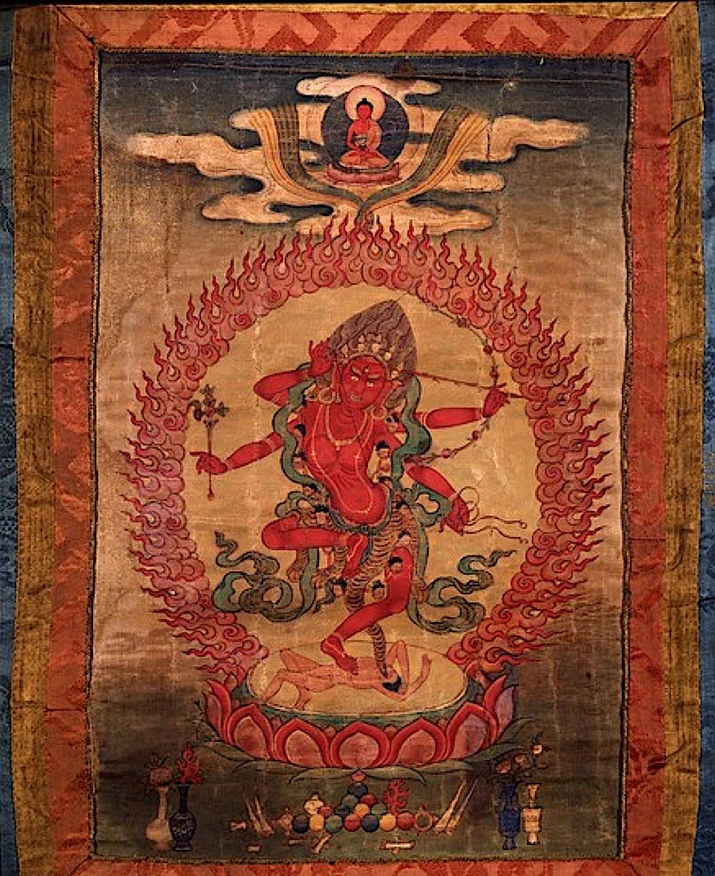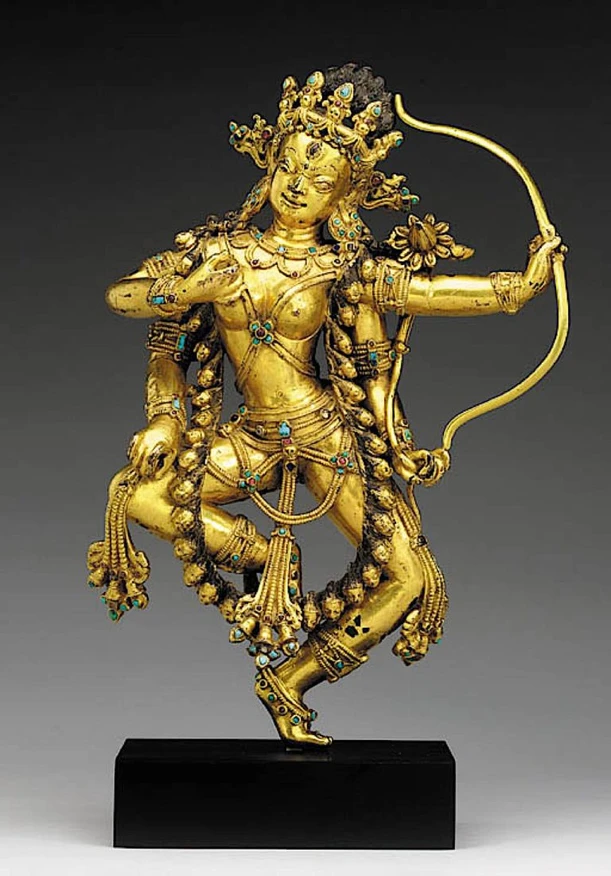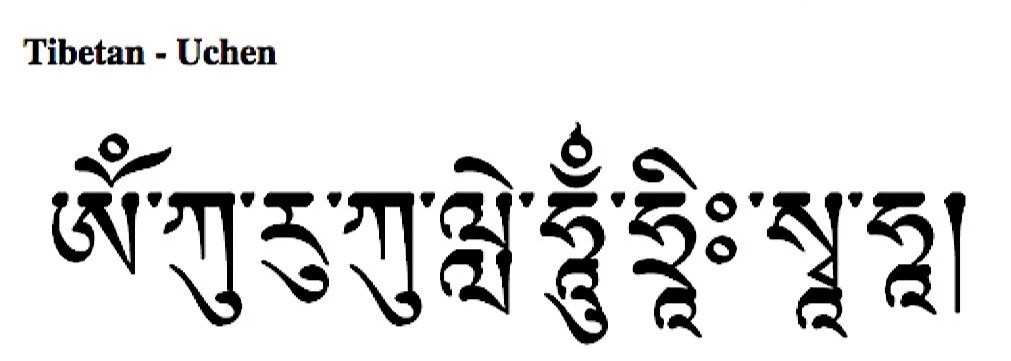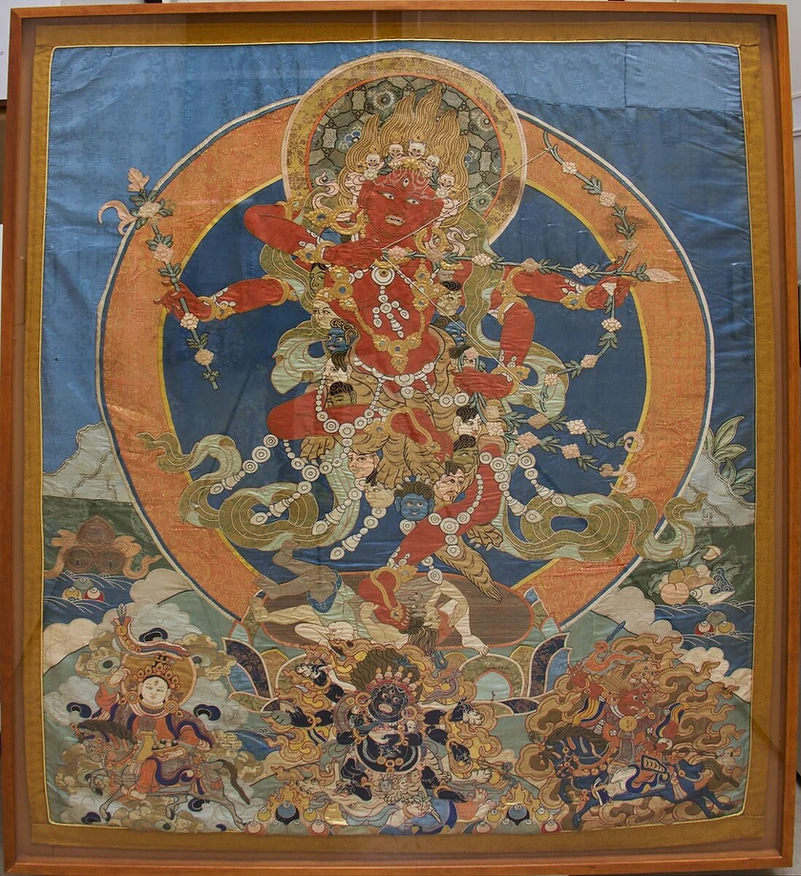Kurukulla is a Buddhist Goddess who will help you with your love affairs, spiritual awakening, and even interviews.
The name Kurukulla is translated in Tibetan as “Knowledge-Causing Mother-Buddha.” She is also recognized as Rigjedma and revered as the Tibetan Buddhist Goddess of Love, Sex, Lust, Magick, Liberation, and Enchantment.
Kurukulla takes the form of a dakini, representing the embodiment of ultimate wisdom that dispels ignorance and transforms negative emotions into pure awareness.
Goddess Kurukulle, often described as a beautiful enchantress who captivates men, is considered an emanation of the red Amitabha Buddha.
Devine representation of Kurukulla
MY MEDITATION MARATHON – MINDFULNESS JOURNAL [20% off]
Kurukulla is always depicted as a 16-year-old goddess, which is attributed to the symbolism of perfection associated with this ideal number. Her youthful appearance, beautiful face, and alluring, voluptuous body exemplify her captivating nature. She is single-faced which represents her embodiment of non-dual wisdom, transcending conventional notions of good and evil. Her nakedness symbolizes her freedom from the constraints of discursive thoughts.
In line with Tantric Buddhist traditions, each aspect of the deity’s pose, arms, legs, implements, and adornments carries profound symbolic significance, representing deep truths within the teachings.

Red Tara and Kurukulla share the red color but are depicted in different positions. Kurukulla typically has four arms, although in other forms she may have eight arms.
She dances gracefully on a red lotus, radiating love and the vitality of youth, as described by Lokesh Chandra. The Red Rite associated with Kurukulla involves attracting lovers on the mundane level, while on a transcendental level it relates to the Sameness Wisdom of Amitabha.
In her hands, Kurukulla usually holds a bow with a flower-tipped arrow, reminiscent of the god of love, Kamadeva. Her other hands hold a hook and a noose made of flowers.
Like other fierce female protectors, she adorns herself with a headdress made of skulls, bone ornaments, and dances atop a pile of corpses. A garland of severed heads surrounds her body. Below her are a group of fierce protectors.
These depictions of Kurukulla illustrate the symbolism and iconography within the context of Tantric Buddhist practices, where each element holds deep meanings and conveys profound teachings.
Red color represents the west, fire, the Padma Family, Lotus, and specifically the “family of Speech” or Dharma. It signifies seduction and beauty, exemplified by a sixteen-year-old youth, which in Tibetan Buddhism symbolizes vitality and the power to captivate, mesmerize, and attract followers to inner Wisdom and the Dharma.
Red streams of light emanate from her exquisite form, symbolizing her compassionate reach to all beings.
The bow and arrow made of red Uptala flowers, associated with the Padma (Lotus family) and sacred to Tara, represent her ability, like Cupid, to pierce us with her enticing wisdom.
In her second pair of hands, she wields a Vajra hook, also adorned with red Uptala flowers, to gently guide all sentient beings into her compassionate embrace, while her left hand holds a lasso made of the same flowers.
Dakinis typically appear in a dancing form, embodying the elusive and playful nature of Emptiness (Shunyata) and the pure joy of Clear Light.
Standing with her left leg atop a prone male symbolizes the subduing of egos, as the left leg takes precedence in female Dakinis (while it is the right leg for Wrathful male deities).
The Dakini adorns herself with wrathful ornaments, including a skull crown, a garland of freshly severed heads, a tiger skin skirt, beautiful silks, and necklaces.
Kurukulla, according to lineage and tradition, can manifest in various forms and colors. Apart from the red form described earlier, she can also appear as blue, white, or pink. Additionally, she may be depicted as seated, with two arms, six arms, or as part of a full mandala consisting of 23 deities.
She can be invoked for the controlling four enlightened activities of attracting, manifesting, magnetizing and subjugating.
Kurukulla’s Mantra Benefits

Kurukulla is invoked for success in tantric rituals, and her mantra empowers the practitioner to subdue or enchant individuals of all ranks, including kings.
She is especially popular among those seeking job opportunities, as she can help one stand out during interviews and create favorable conditions for promotion or being hired.
With her transformative power, Kurukulla can bring about dramatic changes in a person’s life in an instant. She is invoked for the four enlightened activities of attracting, manifesting, magnetizing, and subjugating.
In particular, Kurukulla is closely associated with magnetizing and attracting favorable conditions. She can assist in drawing the attention and affections of a partner by removing internal obstacles that hinder such connections. Whether desiring a loving and caring partner, seeking to deepen the love of a specific person, or wanting to reignite lost love, Kurukulla’s influence can be invoked.
Furthermore, she aids in attracting and magnetizing auspicious circumstances, creating favorable conditions for one’s spiritual practice and overall well-being.
Mantra of Kurukulla: Om Kurukulle Hum Hrih Svaha

OM – Om is composed of three letters. A, U, and M. These symbolize the practitioner’s impure body, speech, and mind; they also symbolize the pure exalted body, speech, and mind of a Buddha.
KURUKULLA – – “Kur” signifies “harsh sound,” and “kulla” signifies “family.”
HUM – In terms of the seed syllables of the five Conqueror Buddhas, hum is the seed syllable of Akshobhya—the immovable, the unfluctuating, that which cannot be disturbed by anything.
HRIH – is the seed syllable of Amitābha and so represents the qualities of the Buddha of the western quarter: chiefly meditation and compassion
SVAHA – A term used to invoke the divine energy and offer one’s prayers.
Her root tantra is the Arya-Tara-Kurukulle-Kalpa (Practices of the Noble Tara Kurukullā), which was translated by Ts’utr’im jeya, a close disciple of great Atisha.
- Follow us on Instagram, and Facebook.
- Subscribe to our YouTube channel.
- Looking for more great content? Dig into our blog.
- Email us at hi@meditationmarathon.me




